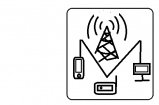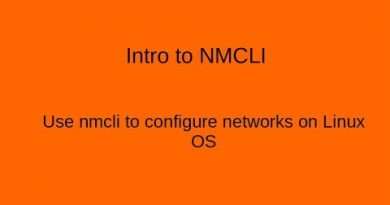L10: IPv6 Address | Address Types (2) | Free CCNA 200-301 Bangla Tutorial (Part 4)
This is a complete video series of CCNA tutorial in Bangla which is designed according to CCNA 200-301 syllabus.
View Full Course: https://youtube.com/playlist?list=PLhmHXxVik5PSvysBZdb-QRpm9dqqNakPq
#CCNA #CCNABangla #Networking #Cisco
===============================
You can connect me on Linkedin
https://www.linkedin.com/in/aalnuman/
✍️For Online Class or Guidelines Whatsapp:+8801738292601 (Bangladesh)
===============================
CCNA 200-301 exam tests your knowledge and skills related to:
✍️Network fundamentals
✍️Network access
✍️IP connectivity
✍️IP services
✍️Security fundamentals
✍️Automation and programmability
After completing CCNA 200-301 you should also be able to:
====================================
– Configure, verify, and troubleshoot inter-VLAN routing, and OSPF and EIGRP for IPv4 and IPv6
– Configure, verify, and troubleshoot VLANs, inter-switch connectivity, STP protocols and features, and EtherChannel
– Configure monitoring and device management and troubleshoot connectivity issues
– Configure, verify, and troubleshoot HSRP and access lists for traffic filtering as well as verify ACLs with the APIC-EM Path Trace ACL Analysis Tool
– Configure, verify, and troubleshoot WAN technologies, including PPP, MLPPP, PPoE, GRE, and single-homed connectivity using eBGP IPv4
– Describe WAN topologies, connectivity options, and QoS concepts
– Describe key security concepts
– Describe remote access and VPNs
– Describe security password policy elements
– Configure WLAN using WPA2 PSK using the GUI
– Explain how automation impacts network management and deployment
– Describe controller based and software defined architectures (underlay, overlay and fabric)
– Describe characteristics of REST-based APIs (CRUD, HTTP, verbs, and data encoding)
– Recognize the capabilities of configuration management mechanisms Puppet, Chef and Ansible
Other Tutorial Links:
Lecture Tutorials
========================================
L1: Computer Networks | https://youtu.be/PV__vsKS2C0
L2: Interfaces and Cables | https://youtu.be/mYAtETH_oN4
L3: OSI Model and TCP-IP Suite | https://youtu.be/Nisl6KcMkAA
L4: IP Addressing Part-1 | Number System | https://youtu.be/3Amdp_-BUo0
L4: IP Addressing Part-2 | IP Address Class | https://youtu.be/LOpOj21wBFM
L5: Collision Domain and Broadcast Domain | https://youtu.be/ZE_NUm0F7nI
L6: Ethernet Frame | https://youtu.be/1B9iBZr-LCQ
L6: MAC Address | https://youtu.be/ZfTTqgdmCtE
L7: IPv4 Header | https://youtu.be/jQvGDTEthGg
L8: ARP and Ethernet Switching | https://youtu.be/hyqT7L33yxU
L9: IPV4 Address Exhaustion | https://youtu.be/qThisXfMtyE
L10: IPv6 Address (Part-1) | https://youtu.be/fFQq3124g9w
L10: IPv6 Address Shortening Technique | https://youtu.be/lSWf65xdjmM
L10: IPv6 Address Types | https://youtu.be/yX4p7rEH82c
L10: IPv6 Address Finding the Prefix | https://youtu.be/WUyQyKnjO0w
LAB Tutorials
=====================================
LAB 1: Introduction to Cisco Packet Tracer | https://youtu.be/UCXazlCYN2g
Lab 2: Connecting Devices in Packet Tracer | https://youtu.be/becaHMbfiIY
Lab 3: Accessing Cisco IOS CLI (Part-1) | https://youtu.be/vdgfdTlMFYw
Lab 3: Accessing Cisco IOS CLI (Part-2) | https://youtu.be/iooF90zziCU
Lab 4: Cisco IOS CLI Modes | https://youtu.be/_DBKpyz03qQ
Lab 5: CLI Context Sensitive Help and Navigation Hot Keys | https://youtu.be/kl28AkG0z6c
Lab 6: Cisco Router Booting Process | https://youtu.be/a8db8Tw3_mg
Please Subscribe and share the video to stay connected and get update of all the videos.
Views : 120
ipv6




